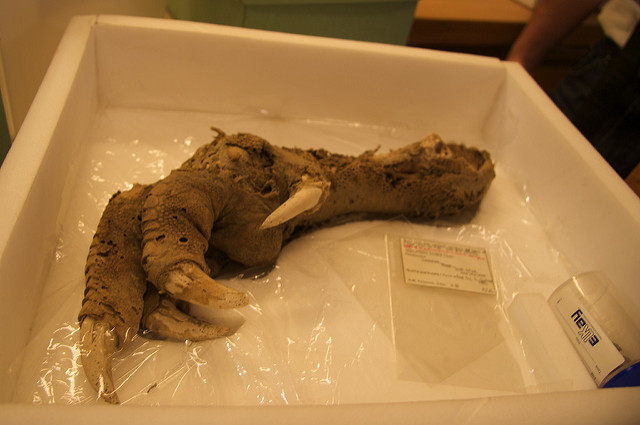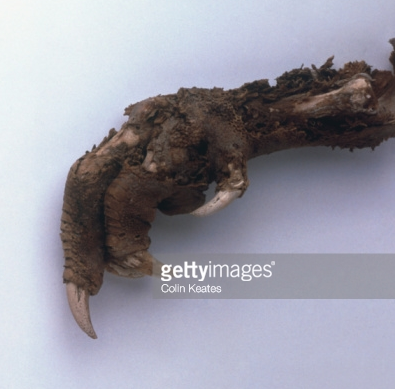A photograph purportedly showing the perfectly preserved right front forearm of a small Therapod dinosaur called a Troodon has been circulating online several years. Although the image is real, it it is not a troodon claw. The photograph was taken by Ryan Baumann and actually shows a preserved Moa foot on display at the Natural History Museum of London:
Getty Images has another image of the fossilized moa foot:
The moa was a large flightless bird that went extinct about 600 years ago, shortly after humans arrived in New Zealand in the 13th century:
For millions of years, nine species of large, flightless birds known as moas (Dinornithiformes) thrived in New Zealand. Then, about 600 years ago, they abruptly went extinct. Their die-off coincided with the arrival of the first humans on the islands in the late 13th century, and scientists have long wondered what role hunting by Homo sapiens played in the moas’ decline. Did we alone drive the giant birds over the brink, or were they already on their way out thanks to disease and volcanic eruptions? Now, a new genetic study of moa fossils points to humankind as the sole perpetrator of the birds’ extinction. The study adds to an ongoing debate about whether past peoples lived and hunted animals in a sustainable manner or were largely to blame for the extermination of numerous species.



